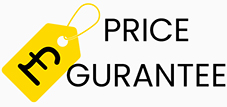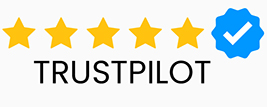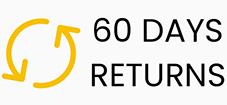




















For golfers looking to save money, the allure of second-hand Callaway golf balls is undeniable. Finding a premium Chrome Soft or a long-hitting Warbird for a fraction of its retail price feels like a hole-in-one for your wallet. But is this a savvy move that preserves performance, or a shortcut that could hurt your game? The truth lies in understanding the risks, knowing how to mitigate them, and setting the right expectations.
Our quick guide cuts through the hype to give you an honest look at the world of recycled and used golf balls. We’ll explore the hidden dangers, provide proven evaluation techniques, and help you decide if buying second-hand Callaway balls is the right choice for your game.
The surface condition of a used ball only tells part of the story. The real threats to performance are often invisible to the naked eye.
Used Callaway balls are typically sold in grades like “Mint” or “Near-Mint,” which primarily describe their exterior appearance. While a ball may look clean with only minor scuffs, even subtle wear on the cover can be detrimental.
The advanced aerodynamics of modern balls, like the HEX dimple pattern on a Warbird or the Seamless Tour Aero on a Chrome Soft, are precision-engineered. Any abrasion can disrupt airflow around the ball, leading to a less stable flight, more drag, and a loss of distance. A ball that looks “near-perfect” might not fly like it.
This is the greatest risk when buying used. Balls recovered from water hazards or rocky terrain can suffer internal damage without showing a single mark. The multi-layer construction of premium models like the Callaway Chrome Tour golf ball is designed to work in perfect harmony. A compromised core or a separated mantle layer can deaden the feel, alter the compression, and kill the energy transfer that generates distance. The result? Inconsistent performance where one shot flies normal and the next falls dramatically short, making it impossible to trust your club selection.
Older models or balls with microscopic cracks in the cover can slowly absorb water. This is especially true for balls that sat at the bottom of a lake for months. Waterlogged golf balls become heavier and unbalanced. An unbalanced ball will not fly true; it can wobble in flight, causing a loss of control, accuracy, and a significant reduction in distance. What you save in cash, you lose in strokes from erratic play.
Even a bucket of “Mint” balls from a reputable seller is not a perfectly uniform set. Unlike a new dozen, where every ball is identical, a used set will have variations. Some may have minor internal damage, others might be from different model years, and a few could be outright duds. This lack of consistency means your game lacks predictability—the absolute cornerstone of improvement.
There is no universal standard for grading used golf balls. One seller’s “Mint” (5A) might be another seller’s “Grade A” (or lower). This inconsistency adds a layer of risk to every purchase, as you can’t be entirely sure what you’re getting until the box arrives.
The golf community is split on the issue, but experienced buyers offer shrewd advice:
“Used balls can be fine depending on the source. You probably don’t want the ones … that have been repainted as they throw the spin off …”
This highlights a critical point: avoid refinished balls at all costs. The process of stripping and repainting a ball completely alters the cover’s texture and thickness, destroying the spin characteristics it was designed for.
“Only purchase the most recent models … I only buy used balls listed as being in ‘mint’ condition. I’ve purchased premium make golf balls at up to £20 less …”
This golfer has the right strategy: be selective. Sticking to the highest grade from recent model years maximises your chance of getting balls that perform like new.
If you decide to proceed, these tips will dramatically increase your chances of a successful purchase.
This is the best way to check for waterlogging.
Do not buy random used balls from unclear sources. Stick with well-known, reputable companies that specialise in recycled golf balls. They have established more reliable grading systems and processes to filter out the worst of the inventory.
This is the most important rule. Be honest about how you will use them.
Yes, but with major caveats.
Second-hand Callaway golf balls can offer tremendous value and are a smart choice for a large number of golfers, provided you:
For the average golfer playing a weekend round, a high-quality used Callaway Chrome Soft or Supersoft will perform almost identically to a new one – enjoy the premium performance of Callaway golf balls without paying a premium price.
Alex Smith is the Head PGA Pro at Online Golf Shop. With over 20 years of experience in the golf industry, Alex has a passion for helping golfers improve their game. He shares trusted and authentic advice through tips, tricks, and thorough product reviews—always based on his own experiences and insights. Alex also helps shape our product selection, making sure it’s tailored to every golfer’s needs, helping you find the right equipment and strategies to play your best golf!


Phone: 020 8064 0105